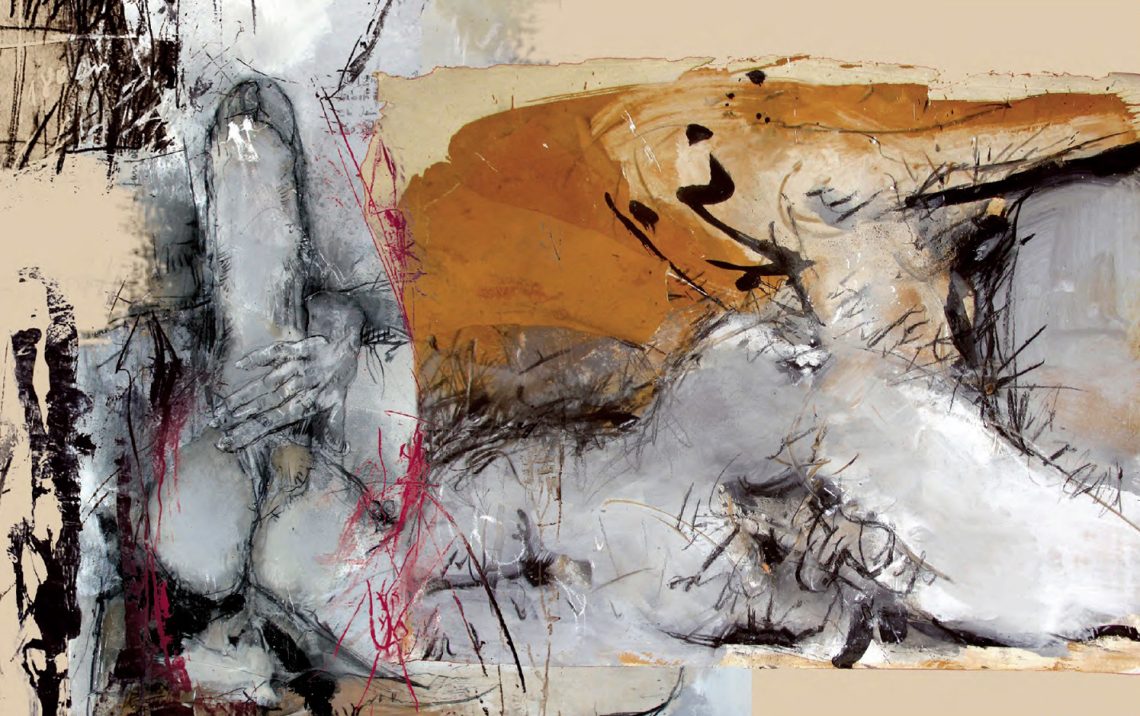
GÜNTER LUDWIG: LOVE IS UNDER THE SKIN
During 2002-2004, German graphic artist Günter Ludwig created a series of nude drawings which inspired poet, Sarah Ines. In 2004, he published a selection of those drawings and poems in an album under the title “Liebe geht durch Haut” (Love goes through the skin). The same publication included three erotic etchings and some older drawings on the same theme.
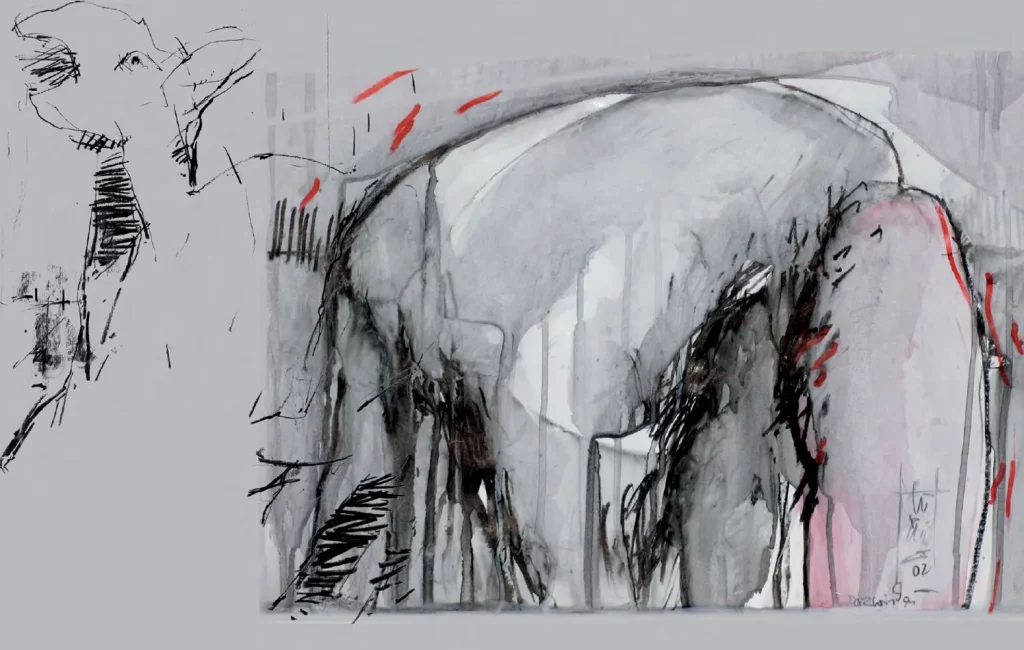
1-1 Deamon and human bending body. Charcoal, pastel, and acrylic on paper. Photo courtesy the artist/ © Günter Ludwig
To see this collection is to get to know Ludwig. If an art lover knows little or nothing about his work, he might superficially characterize the entire series as erotic. Ludwig created most of those drawings during his midlife. It had been a psychologically turbulent period marked by health issues and personal losses. From that point, onward art, for which he has sacrificed everything, became a path, actually the only path for externalizing pain, sorrow, and conflicting emotions. The included drawings and etchings in “Liebe geht durch Haut” are the projection of his introspection on issues regarding love and relationships. The works have many autobiographical elements but also reflect the human fear and tension during the process of self-observation.
With charcoal, pastel, and acrylic Ludwig worked directly from his unconscious. In front of a nude body bending forward (pic. 1-1), the demon (spirit) depicted in the background stands as the artist’s alter ego. An alter ego that tries to escape from an exhausted body surrendered by the gray of compromises, conservatism, and aloofness. The short red lines between the nude figure and the demon reveal the level of tension and anguish as one figure is being detached from the other. While the gray color is dripping from the nude body and expands to space the demon (spirit) is looking desperately for an exit.
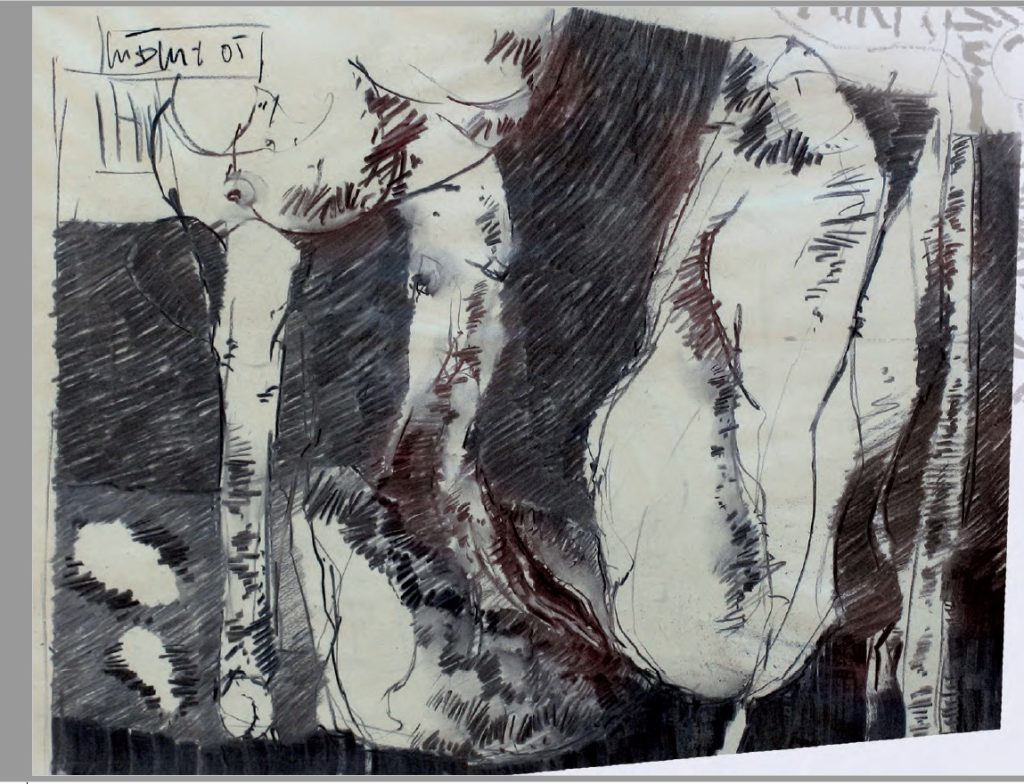
1-2 Stallion in front of a human body. Charcoal drawing on paper. Photo courtesy the artist/ © Günter Ludwig
In this drawing (pic.1-2), the artist becomes a stallion standing in front of an abstract body lifting his left leg to take action. In contrast to the previous composition, red lines that indicated increased tension and anguish have vanished. As we don’t see the upper part of the animal, only his front legs and part of his body, we can assume that the demon (spirit) might still be present in disguise. The abstract form right in front of the stallion is a human body of non-specified sex.
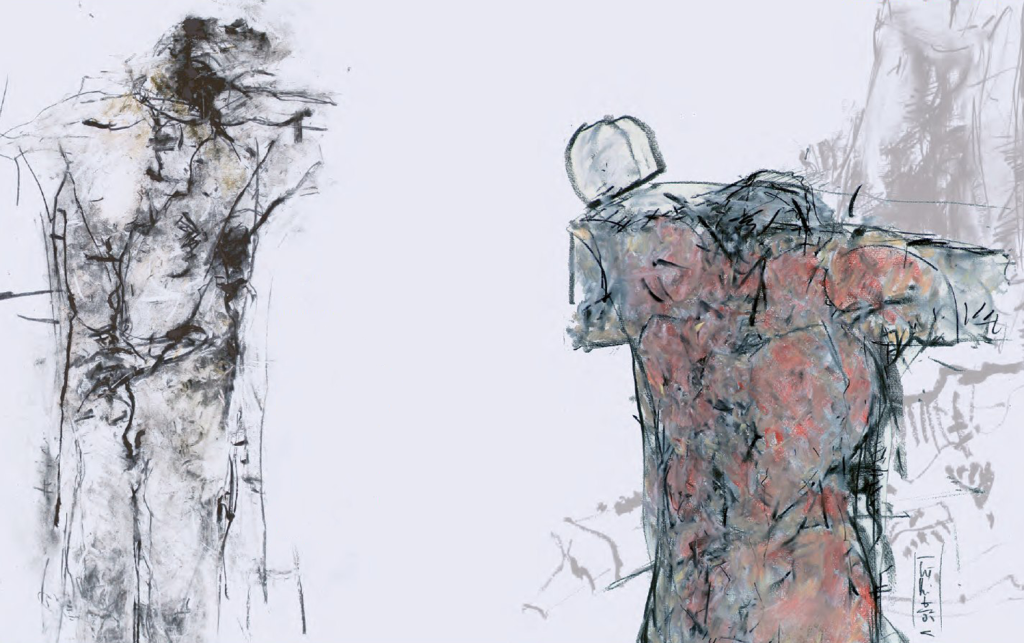

2-1 Study on painting The last supper. Charcoal, pastel on paper. Photo courtesy the artist/ © Günter Ludwig
2-2 Venus of Willendorf figurine, seen from all four sides, c. 28,000-25,000 B.C, Limestone. 4 1/8″ high. Naturhistorisches Museum, Vienna. photo source: Wikipedia
Instinctively he goes to such an extreme abstraction as to exclude the faces and heads of his human figures in most of his drawings (pic 1-1, 1-2, 2-1). Ludwig doesn’t aim for realism. It’s the same treatment cave artists used for depicting their female figurines (see Venus of Willendorf) (pic. 2-2) where the idea and symbolism of the female figure are more important than the representation of the female of the species.
While the bodies are static, they seem to spread in space as fluid forms that participate in an ongoing physical and emotional interaction. The infusion of his abstract forms in the space produces vibes of a non-verbal dialogue. Ludwig works fast and continuously interferes with his prototypes. His method explains to a large extent why during our lengthy discussions, he keeps characterizing his works as sketches, even the ones that are published.
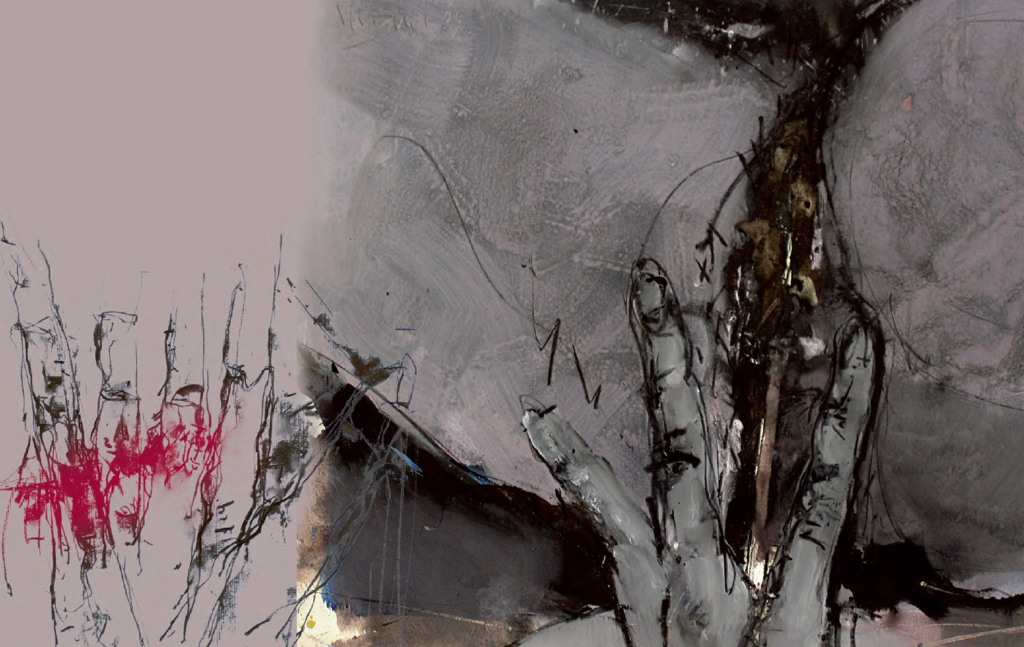
3-1 Hands in front of a vagina.Charcoal, pastel on paper. Photo courtesy the artist/ © Günter Ludwig
The multiple versions of the same drawing subconsciously incorporate years of knowledge and experimentation in printing, engraving, painting, and photography. Most of the drawings included in the album are originally monochromatic. Modern printing methods on picture post-processing offered Ludwig a broader cold color palette. He doesn’t apply colors to the entire drawing. He treats color rather as a tool overemphasizing the physical and emotional interaction between the forms (pic 3-1, 3-2).
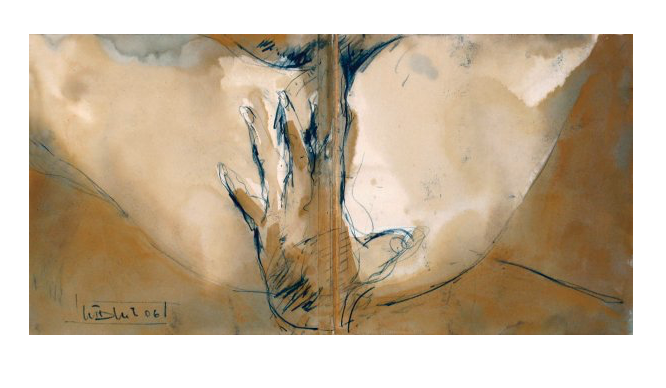
3-2 Hands in front of a vagina.Charcoal, pastel, acrylic on paper. Photo courtesy the artist/ © Günter Ludwig
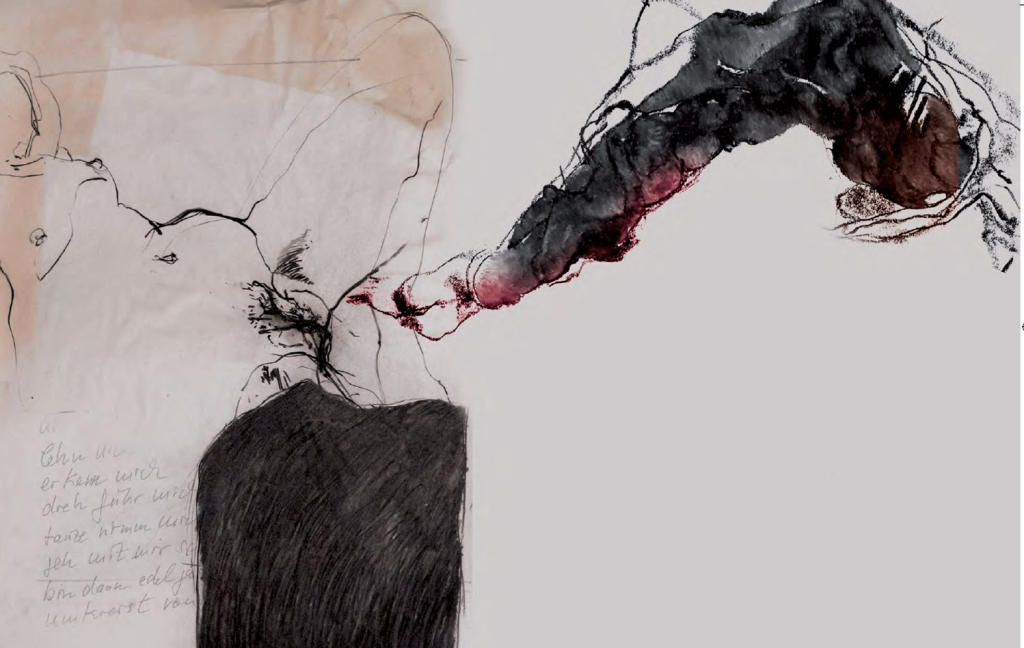
4-1 Günter Ludwig, Searching inspiration. Charcoal, pastel, acrylic on paper Photo courtesy the artist/ © Günter Ludwig
As I was going through the album, I noticed a group of drawings where we can see Günter Ludwig’s strong influence by the German draftsman and graphic artist Horst Janssen. Both depict male and female sex organs in close-ups, erected, or during the sexual act in a superficial way that is symbolic rather than an act of sexualizing human figures. Under the same symbolism are the lighter colors on them far from the usual cold pallet Ludwig uses. The over-exaggeration in elongating legs, fingers (pic 3-1, 5-4, main photo), and phallus (pic 4-1) practice we see first time in Egon Schiele (pic 4-2) – reflects the anguish of any artist to maintain his inspiration alive. The vagina symbolizes the fertility cradle from which thoughts and emotions become visions of the inner reality, while the phallus is the tool of conveying it to art. While in Horst Janssen’s eccentric erotic graphic art, eros connects to death and drama, Ludwig connects eros to life, rebirth, and inspiration. Ludwig, like Janssen, does not copy reality. His work projects emotions, desires, and thoughts carefully hidden under the human flesh. For him, any reproduction of reality is simply a copy.
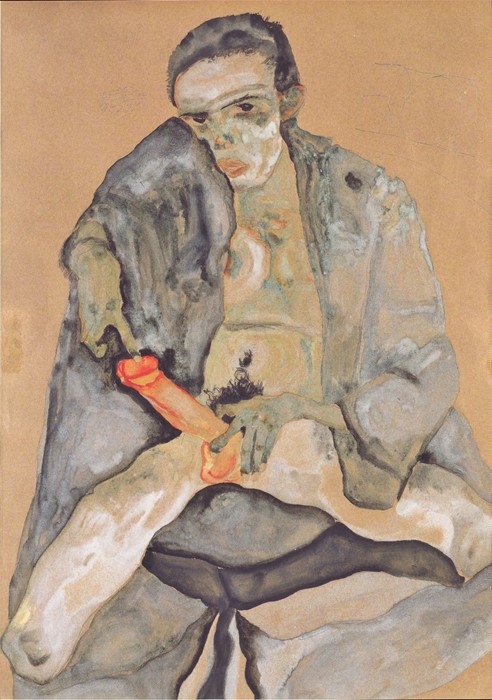
4-2 Egon Schiele, Eros, 1911. chalk, gouache, watercolor on paper. 55,9 x 45,7 cm. Private collection, Melbourne, Australia. Photo source: Wikimedia
Video I, II, III
Women as art models, poets, authors, lovers, philosophical or literary companions, or fellow artists have been a constant inspiration for Ludwig. If “Love goes through the skin”, was inspired by an actual erotic partner in his life, sexual fantasies or the recollection of erotic moments will remain unknown.
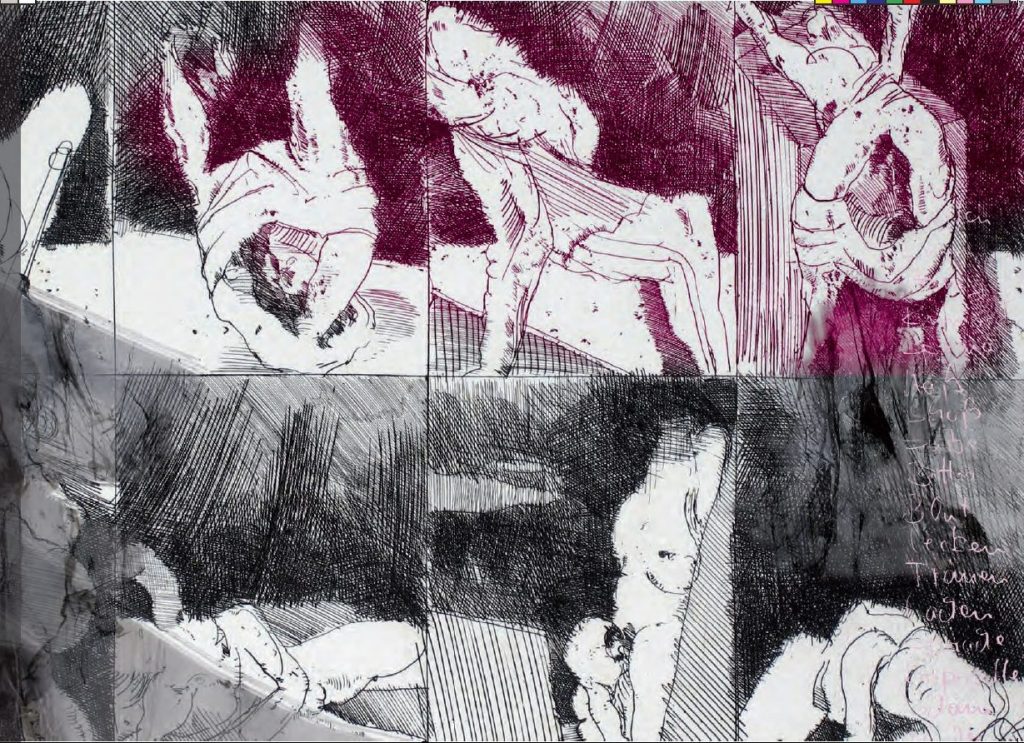
5-1 Günter Ludwig, Video I, etching. Photo courtesy the artist/ © Günter Ludwig
The three engravings included in this publication titled “Video I,II,III” are treated as erotic video storyboards. They reveal a need to mentally and psychologically control life experiences with female figures as part of memories or fantasies. Each storyboard is totally different from the other in number of scenes and the space each scene occupies. Some of these scenes bring in mind Goya’s sketches of “Ma Maja” (pic 5-7) and his “Los Caprichos,” series especially the one with the nude figure stretching her stocking (pic 5-3). As Goya aimed to present a story beyond the obvious so does Ludwig in his etchings which are open to multiple interpretations. The introduction of the little abstract figure in the etchings (pic 5-1) but also in some drawings (pic 5-4, 5-5) is open to multiple interpretations ranging from the artist’s childhood memories to more recent recollections and fantasies.
Ludwig chose for this series a subject referring to the universal pursuit of love within ourselves and others. By “diving” into his subconscious, he urges the viewer to reintegrate the value of words and images by communicating mutual experiences.
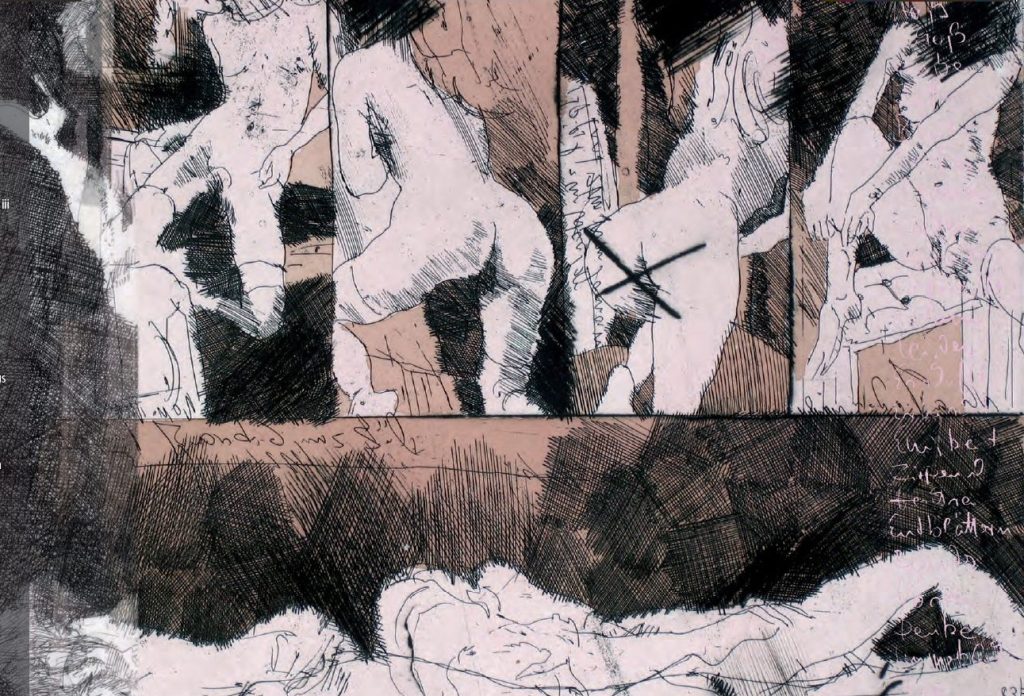
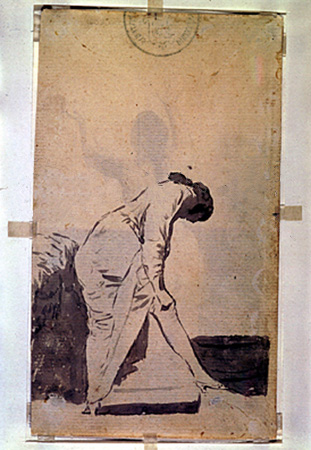
5-2 Günter Ludwig, Video II, etching. Photo courtesy the artist/ © Günter Ludwig
5-3 Francisco Goya, Dibujos del Álbum A, Los caprichos, 1796. Photo source: Wikimedia
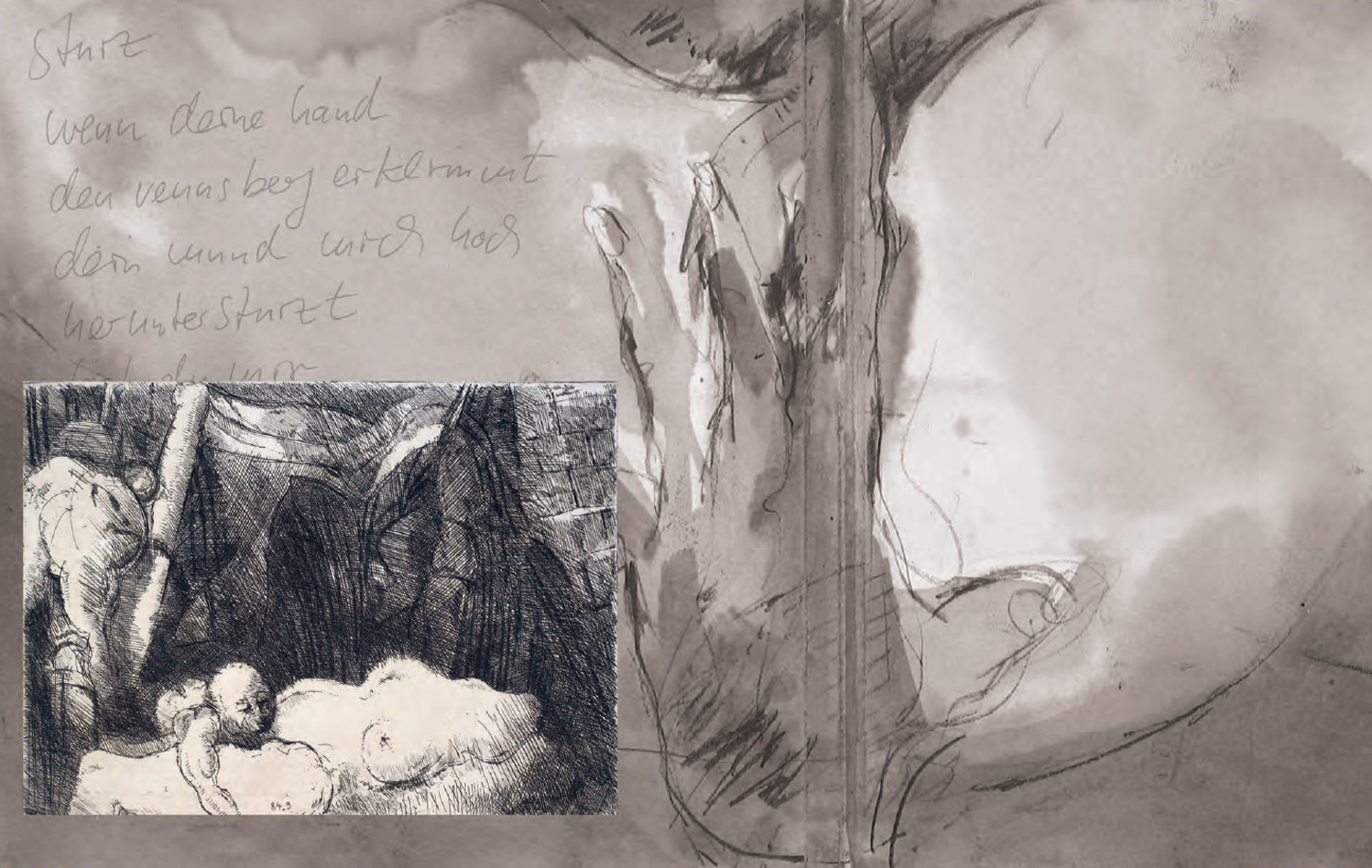

5-4, 5-5 Drawings. Photo courtesy the artist/ © Günter Ludwig
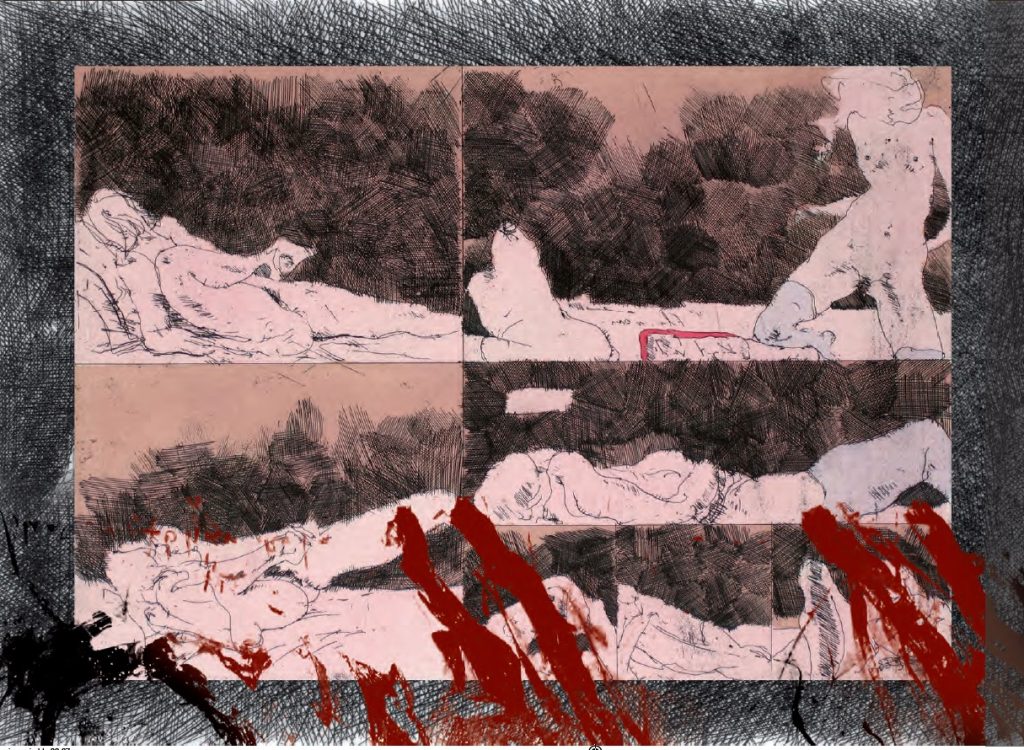
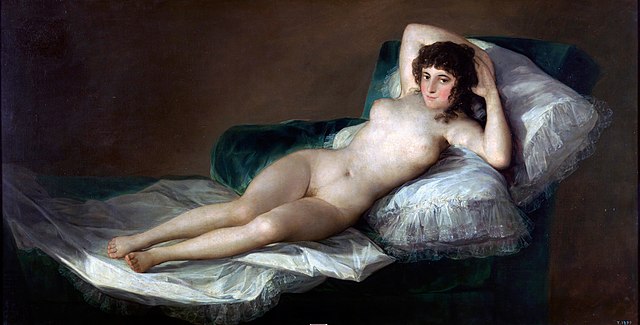
5-6 Günter Ludwig, Video II, etching. Photo courtesy the artist/ © Günter Ludwig 5-7 Francisco de Goya, The nude Maja, 1800. Oil on canvas, 98 x 191 cm. Museo del Prado, Madrid, Spain. Photo source: Wikipedia
#athinas
Become part of Athina’s team! Share your work, enthusiasm, and opinion in visual arts.
follow us
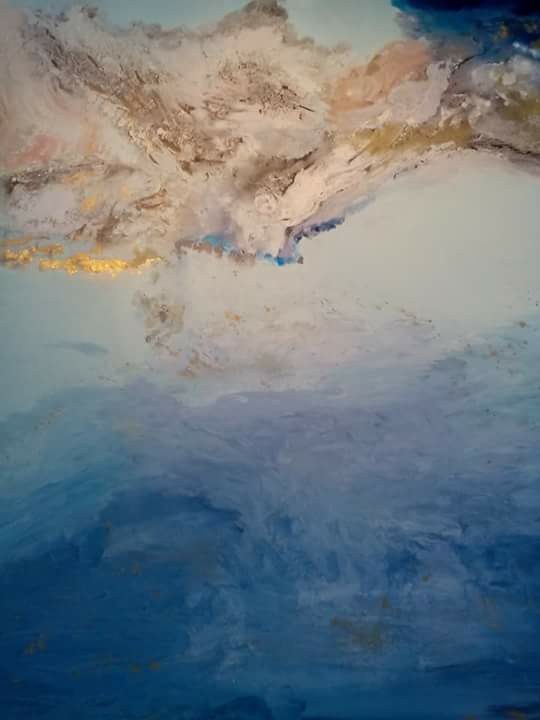

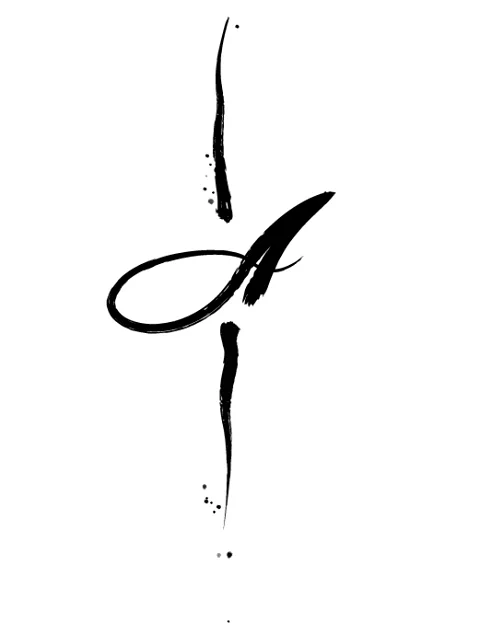
 When you visit any website, it may store or retrieve information on your browser, mostly in the form of cookies. This information might be about you, your preferences or your device and is mostly used to make the site work as you expect it to. The information does not usually directly identify you, but it can give you a more personalized web experience. Because we respect your right to privacy, you can choose not to allow some types of cookies. Click on the different category headings to find out more and change our default settings. However, blocking some types of cookies may impact your experience of the site and the services we are able to offer. For more information please read our
When you visit any website, it may store or retrieve information on your browser, mostly in the form of cookies. This information might be about you, your preferences or your device and is mostly used to make the site work as you expect it to. The information does not usually directly identify you, but it can give you a more personalized web experience. Because we respect your right to privacy, you can choose not to allow some types of cookies. Click on the different category headings to find out more and change our default settings. However, blocking some types of cookies may impact your experience of the site and the services we are able to offer. For more information please read our